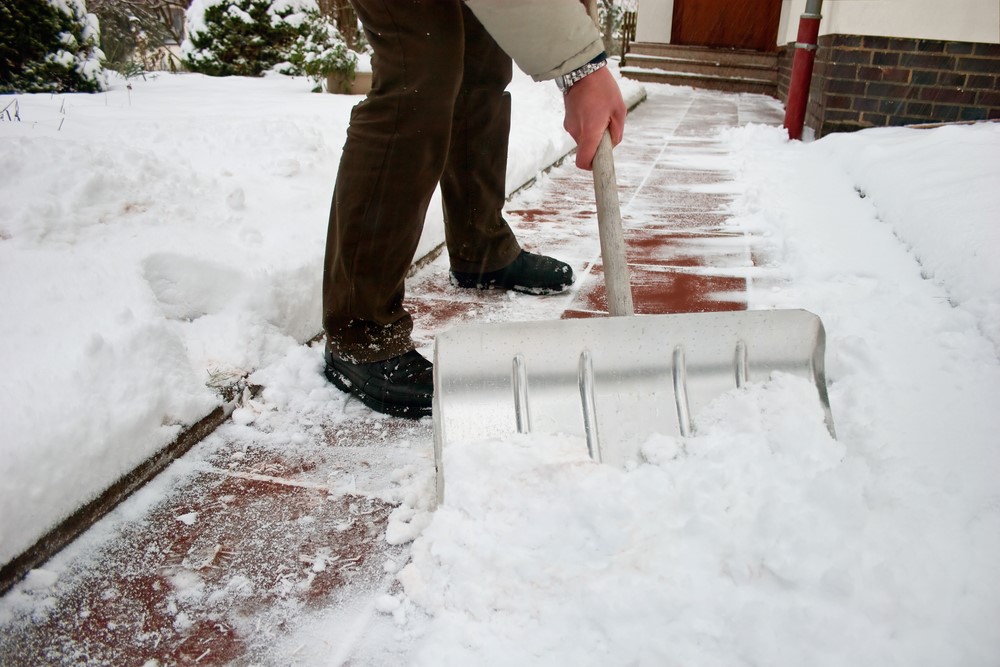Although it may feel like it was only just summertime, the chilly temperatures and harsh conditions of winter are right around the corner.
In fact, many parts of the country have already seen temperatures drop below freezing and some snow, so now is the time to get ready to face the winter chill, especially if you are living with chronic pain.
Many people with pain dread the winter months, some of the most difficult of the year. Colder temperatures can aggravate pain — and basic winter tasks, like shoveling snow or walking on slippery sidewalks can increase the chance of injury.
With a bit of preparation though, the winter months can be more manageable, and less painful.
Prep Step #1: Deal With Snow and Ice
When you are in pain, the last thing that you want to do is shovel snow — and depending on the cause of the pain, you probably shouldn’t anyway.
Nearly 200,000 people visited emergency rooms over a seventeen year period with shoveling-related injuries, according to the American Journal of Emergency Medicine.
The most common injuries include overworked muscles and falls, but soft tissue and lower back injuries also occurred fairly regularly.
Not only does shoveling snow create the potential for injury, but the simple act of being out in the cold can increase your pain. For that reason, it’s best to arrange for snow removal ahead of time.
Consider hiring a local landscaping or snow removal company to come and clear your driveway, walkways, and steps, and remove snow from your roof if necessary. Have icy spots salted to help prevent a fall.
Many snow removal companies work on a contract basis. You pay a flat or monthly fee to have the snow taken care of after every storm, a worthwhile investment.
If you can’t find a professional snow removal company, ask neighbors for help. Chances are, there is an enterprising teen in the neighborhood who would love to earn some extra cash on snow days.
Prep Step #2: Maintain Your Heating System
You don’t want your heat to quit working on a cold, windy day, so have your heating system serviced before the coldest days of winter arrive.
Hiring a professional to come to clean and tune up your furnace, replace furnace filters, and test the thermostat can help identify potential problems before they spell disaster — and keep you from further injuring yourself trying to fix them on your own.
If you use oil or gas for heating, fill the tank now, and consider getting automatic deliveries so you don’t run out of fuel.
Prep Step #3: Prepare Your Vehicle
Everyone should prepare their vehicles for winter, not just those with chronic pain. However, when you have pain, certain tasks can be more challenging, so take steps to make it easier to drive when you need to.
If you have snow tires, have them installed in the fall. That’s also a good time to check your emergency supplies.
Always keep an extra blanket or two, some cold weather gear like hats and mittens, and some extra water and snacks in the car in case you get stuck.
Consider investing in a remote starter so you can start the vehicle and warm it up before going outside. That way, you only need to go outside once, and won’t have to wait in a cold vehicle while it warms up, possibly causing your pain to flare.
Prep Step #4: Get Cozy
When going outside causes you to hurt, you want to stay indoors as much as possible.
Before it gets too cold, stock up on some supplies, including:
-
Emergency supplies.
Keep flashlights, candles, and batteries in case of a power outage.
-
Pantry essentials.
Keep plenty of non-perishable food on hand so you don’t have to go to the grocery store as often.
-
Medicines.
Keep cold or flu medicines on hand so you don’t need to go to the pharmacy. Stockpile tissues, cough drops, and other necessities beforehand.
-
Activities to keep you busy.
Even when you are in pain, cabin fever can strike. Be prepared with an array of indoor activities for entertainment. Jigsaw puzzles, books, movies, coloring books, hobby supplies — anything that can keep your mind busy while you stay warm indoors.
-
Extra socks and warm clothing.
Staying warm can help ease your pain, so make sure you have plenty of warm, cozy clothing that you can layer.
Prep Step #5: Take Care of Yourself
Working with your pain treatment team to create a personalized plan for staying healthy and managing pain throughout the winter.
Taking care of yourself with a healthy diet and exercise can also help you remain more comfortable throughout the winter. Drink plenty of water, eat plenty of fruits and veggies, limit sugar intake, and try to remain on a regular sleep schedule. With doctor approval, an exercise plan that includes walking, swimming, tai chi, or other gentle exercises can help you maintain your energy and reduce pain.
Finally, don’t hibernate or allow depression to take hold during the colder months. Try to remain social, and laugh when you can. Doing so will help improve your mood, increase your energy, and potentially reduce your pain — and at the very least, help you look forward to spring and the return of the warm weather.
If you’re suffering from chronic pain, contact The Heilman Center for Pain and Spine Care today to schedule a consultation with a Pain Specialist and learn about your pain treatment options.


